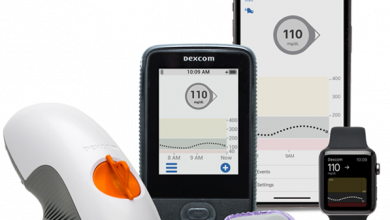Signs Your Pump Basal Rate Needs Adjusting & How to Get It Right
Learn to identify highs or lows that are from a bad basal rate on your pump and effectively change those rates for better blood sugar control

One of the biggest advantages of using pump therapy to treat your type 1 diabetes is the ability to set multiple basal rates throughout the day.
Unlike MDI, which requires you to take a single dose of long-acting insulin to cover your basal blood sugar throughout the day and night, the variable basal rates of pumps more accurately reflect how a true pancreas works.
Unfortunately, it is easy to get confused by this added basal rate flexibility.
- How do I know when my basal rates need to be changed?
- When do I start this new rate and when should I set it to end?
- When do multiple basal rates become too many basal rates?
These tips will help you identify when you may need a basal rate adjustment and how to go about changing that rate in a coherent and effective way.
Signs Your Basal Rate Needs to be Adjusted
When you have high or low blood sugar, it can be difficult to determine if the problem was a miscalculated meal bolus, an incorrect carb ratio, or a bad basal rate.
Here are three signs that usually indicate your basal rate may be to blame.
1) Your Sugars Rise or Fall Overnight
For most people, nighttime is the one stretch of time throughout a day where the only thing affecting your blood sugar is likely to be your basal rate. Typically, your dinner bolus dose will be spent, your food will be digested, and you aren’t likely to be exercising.
This makes identifying basal rate issues much less complicated, but not one-hundred-percent straight forward.
For example, a large dinner, especially one containing a lot of fat, or a late dinner, may continue to affect your sugars well past midnight and cause unexpected highs. Similarly, excessive exercise the morning before or an overly active day may lead to lows while you sleep.
If you are concerned your overnight basal rates aren’t cutting it, but you want to be sure, you’ll need to remove these types of factors from the equation. Eat a light, early dinner to help stabilize your sugars before bed and avoid any major changes in exercise or activity for twenty-four hours beforehand.
If your sugars still fluctuate (rise or drop by 30mg/dL or about 2 mmol/l) for three or more nights in a row, then that is a clear indication your overnight rate or rates need to be adjusted. Keep in mind, if you don’t have a CGM, you will need to wake up at least twice during the night to check your sugars to identify any fluctuations.
2) Your Sugars Rise or Fall with No Active Insulin On Board
One thing that makes nighttime basal rate issues so easy to identify is the lack of bolus insulin interference. If you happen to go for longer periods between meals and snacks, you may also have an easy opportunity to identify basal issues during the day.
If you catch a slow rise or fall during a time when you have no active insulin on board, this is usually a clear sign your basal rate needs to change.
Of course, there are always exceptions to the rule.
- If you ate a high-fat meal, it may have taken longer to digest than your active insulin time would have covered.
- If you ate a low carb meal after eating relatively few carbs throughout the day, your body may have resorted to processing some protein into glucose.
These interactions can easily lead to meal-related glucose shifts after your bolus insulin is used up.
If you notice your blood sugar rising or falling with zero insulin left onboard, note the time and keep an eye on it over the next few days. If you notice the same trend despite different meals preceding it, this is a good indication your basal rate is to blame.
3) Your Sugars Rise or Fall Between Meals
Ideally, your bolus insulin should bring your blood sugars back down to premeal levels about two hours after you eat.
There are plenty of issues that can affect this goal, however. Miscalculations, high-fat or high-protein meals, and bad carb ratios can all cause in-between meal fluctuations.
If your sugars return to normal about two hours after a meal only to continue falling or to slowly rise back up, your basal rate may be the problem.
To confirm this:
- Eat an easy-to-calculate, low-fat meal before the time period in question for a few days in a row.
- See if the trend continues
- If it does, you likely need to switch your basal rate around that time of day.
How to Use Basal Rate Testing to Find the Right Rates
Knowing you have a basal rate problem and knowing how to fix that problem are two different things.
Even if you have identified that your basal rate is too high or too low during some point of the day or night, it can be hard to know how much to change the rate and whether or not you need to adjust the time period or add a new time period altogether.
The easiest way to clearly identify when your rate needs to change and how drastically is with something called Basal Rate Testing. While the concept may seem a little overwhelming at first, it is really straightforward, but it will take some time commitment.
Here are the basics steps of Basal Rate Testing:
- Identify the time of day you believe you need to make a basal rate adjustment.
- Eat your last meal four hours before that time period starts (or, for morning issues, simply eat a late dinner and then skip breakfast). You will also need to avoid exercising during the test period.
- Your blood sugar will need to be at a healthy level before you begin; If it is below 80mg/dL or over 200mg/dL, treat/correct and try for another day.
- If you don’t have a CGM, you will need to manually test your sugars every hour.
- Continue to fast for about six hours or through the night (or at least long enough to cover the time period of concern).
- If you fall low or rise to an unhealthy level, treat/correct and retest another day.
Test and Confirm
After you complete the fast, review your numbers. If your levels stayed relatively stable (did not wander more than 30mg/dL or 2mmol/l up or down), then your rate is likely correct. If it rose, your rate likely needs to be higher and if it fell, it needs to be lower. Note the time when the rise or fall began.
Repeat the test two more times over the next few days/weeks to confirm.
Adjustment Size & Timing?
In terms of how much to adjust your basal rate up or down, typically you’ll want to make changes at a rate of about 10% at a time, but more drastic rises or falls will benefit from a more aggressive rate change than moderate rises and falls.
As far as the time period to set the new rate for, that can be tricky as well. Keep in mind that insulin takes time to show an effect, so changes should start one to two hours before the rise or fall was seen.
You want to be careful about creating too many different basal rates throughout the day as this can bring a whole new layer of confusion to your control. Some endocrinologists recommend shooting for only a couple rate changes throughout the day while others see benefits to more.
Since everyone is different, there is no right answer here. But, if you notice multiple periods of high basal rates intermixed with periods of low rates throughout the day, that is a good sign you may be overcomplicating things.
Look for larger trends and try to set average rates to cover longer periods and work with your healthcare team if you continue to struggle to keep things level.
Change How You Think About Basal Rates
Basal insulin is meant simply to cover the amount of glucose your liver trickles into your bloodstream every few minutes. That is why Basal Rate Testing works so well to identify where issues may lie in your set basal rate program.
But, it is worth keeping in mind that there are a lot of factors that can affect your blood sugar outside of food.
Stress, hormones, exercising, and illness can all change how much glucose your liver dumps into your blood and how well your body utilizes insulin.
While these factors can make it seem like you need to change your basal rate, try to remember that your basal insulin is only there to cover your basal blood glucose under normal circumstances.
Rather than make permanent changes to your set basal rates in response to these fleeting fluctuations, it’s best to utilize other tools at your disposal. Temporary basal rates, correction boluses, and even secondary basal rate sets are all better ways to handle stress, hormones, and other blood sugar complicating factors.







